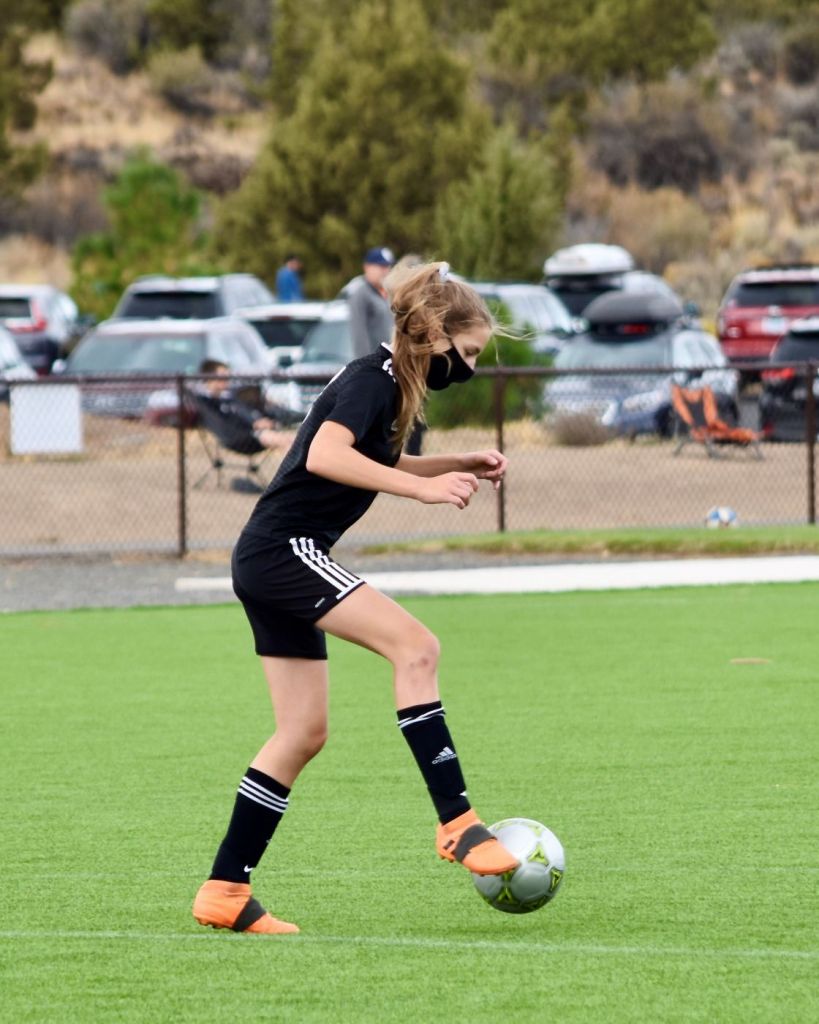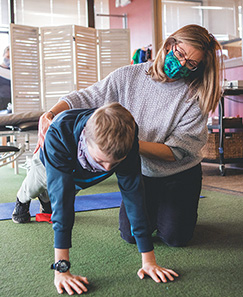Are growing pains real?
Growing pains are classified as non-specific leg pain that kiddos often complain of at night but can also take place during the day. They are benign in nature, meaning that they don’t create harm to the body and are not associated with injured body tissue. Questions abound about growing pains, such as: At what age do growing pains start? How long do growing pains last? Are growing pains because of a growth spurt?
10 things we know about growing pains
- Growing pain is one of the most common causes of repeat pain complaints in children.
- Growing pains are typically in the legs and can be in one leg or both. The pain usually involves the calves, front of the thighs and/or behind the knees.
- Symptoms of growing pains can be felt even when kids are not experiencing a growth spurt. There is no direct link between periods of rapid growth and leg pain.
- Symptoms of growing pains are not consistent (i.e., may not take place nightly) and typically are not directly related to any specific physical activity.
- Research has found that the mean age of children who have growing pains is 8 ½ years old, and they typically affect kids between the ages of 6 and 11 but can start as early as 3 years of age.
- The prevalence of growing pain varies, but some studies show it affects 50% of kids.
- Episodes of pain will typically end by late childhood.
- The complaints of pain may result in self-limiting activity levels for kiddos (this means kids might choose not to participate in physical activities or sports because of their growing pain).
- Massaging the legs can help reduce the intensity of growing pains.
- It is important to differentiate growing pains from other potential causes for the pain. This is often done by a pediatrician who can rule in/out other diagnoses and refer for imaging (i.e. x-ray) if indicated. Physical Therapy is also a great place to start if you have concerns.

If your child is complaining of leg pain that does not seem to have a cause or consistent pattern of pain, then you might consider these to be growing pains. Growing pains were classified by the medical world in the 1930s and the term has stuck around despite the pain our children not being related to actual growth spurts.
If you as a parent or caregiver are ever concerned about the symptoms your child complains of, reach out to a medical provider. Advocate for your kiddos to make sure their health, safety and quality of life are at the levels you want for them.
What causes growing pains?
The cause of growing pain is unknown. Theories surrounding the cause of leg pain in children are as follows:
- Other musculoskeletal involvement (i.e. hypermobility, flat feet, etc.) contributes to painful legs.
- Muscular fatigue caused by increased levels of activity that the muscles are not conditioned for.
- Decreased bone density in the legs (especially the shin bone).
Although the research is limited in what causes our kids’ leg pain, that does not mean their pain is not real and cannot be addressed. Pain thresholds are unique to each individual person and/or child and physical therapists are a great resource for learning about pain, how we process it, and how to cope with it. There is a lot to be said for pain neuroscience education to help people understand how pain processes work and how best to navigate the pain we feel. It is never too early to educate our young ones in lifelong lessons about their bodies and how to take care of them.
It is also important to note that at nighttime, our body stops moving which allows for increased processing of our nerves that send pain signals, which might have something to do with pain while in bed.
How do I stop growing pains?
If growing pains are causing your child to lose sleep or avoid some of their favorite activities, try these approaches at home to help reduce your child’s pain:
- massage the legs and other areas of pain
- administer over the counter pain medication per pediatrician or MD guidance
- calf, hamstring, or quadriceps stretching may help with any potential muscle tightness in the legs
- pain management techniques such as diaphragmatic breathing, meditation, or mindfulness, especially at nighttime
How can physical therapy help?
A physical therapist will diagnose growing pains after they perform a thorough musculoskeletal assessment to see if there are any other conditions or impairments that may be contributing to your child’s leg pain. As musculoskeletal experts, PTs can look at how your kiddo moves and assess their muscle imbalances/weakness. By addressing movement disorders and imbalances the goal is to not only determine the best way to reduce growing pain discomfort but to also prevent future issues that could cause continued pain.
Interventions such as stretching, strengthening, and improving movement patterns, in addition to parent/caregiver education regarding activity modification, pacing and pain neuroscience education are likely to be used during your child’s customized course of care.

By partnering with a physical therapist who will work with you and your child to reduce pain and improve function, so they can reach the goals they set for themselves, you can help them get back to the things they love and take joy in watching as they increase and improve their participation in play, movement, sports, and recreation.
Resource:
Lehman, P. & Carl, R. (2017). “Growing Pains: When to Be Concerned.” Sports Health, vol. 9, no. 2, 2017, pp. 132-138.
When should I be concerned about growing pains?
If your child is not participating in activities because of their pain this might be a sign that outside medical help is needed. If you are worried about the severity or how often they are experiencing pain, you may also feel compelled to call on medical expertise to address the issues at hand. It is important to advocate for our kids. Reach out to your local Therapeutic Associates clinic for more guidance and help!


